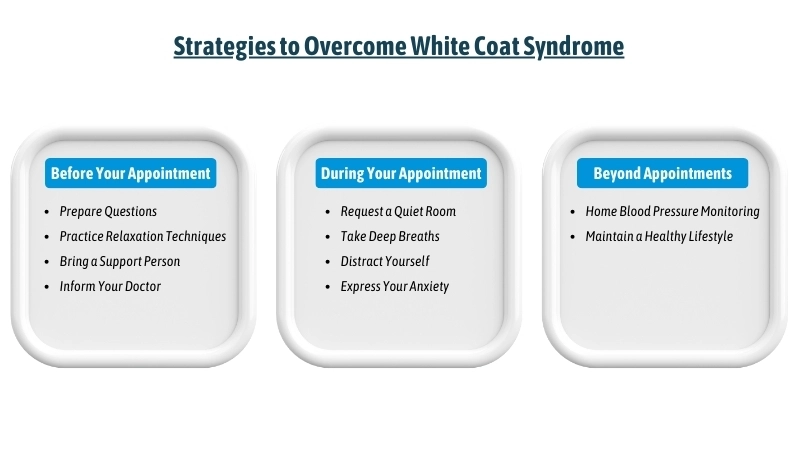

Did you know that a significant number of people experience a temporary spike in blood pressure when in a medical setting? It’s a surprisingly common phenomenon called white coat syndrome. While seemingly harmless, this condition can lead to misdiagnosis and unnecessary treatment.
Let’s dive into why it happens and how to get accurate results for your health care. If your blood pressure always seems off at the doctor’s, it might lead to the wrong treatments or make you worry too much. Ready to feel calmer in the doctor’s office and be sure they have the right information about your health? Let’s figure out why those white coats make you nervous and what you can do about it!
White coat syndrome, also known as white coat hypertension, is a situation where your blood pressure readings come out high only at the doctor’s office, but normal elsewhere. Imagine this: you’re at the doctor’s getting a checkup. Everything seems fine, but then the nurse takes your blood pressure and – whoosh! – it shoots up. Your heart might race, you might feel sweaty, and suddenly you’re wondering if something’s seriously wrong.
While white coat syndrome isn’t the same as full-blown hypertension (high blood pressure). White coat syndrome is a tricky situation where your blood pressure jumps up in the doctor’s office due to anxiety or stress. However, it drops back down to normal when you’re in a different environment. Hypertension, on the other hand, is when your blood pressure remains consistently high, regardless of where you are.
It’s possible for someone with hypertension to also experience the added spike of white coat syndrome during doctor visits. However, having white coat syndrome alone doesn’t automatically mean you have hypertension.
Another condition that presents the opposite scenario to white coat syndrome is masked hypertension. With masked hypertension, your blood pressure appears normal during those nerve-wracking doctor’s office visits. However, in other environments – at home, at work, or during your daily routine – your blood pressure consistently measures higher.
White coat syndrome can be a confusing condition. Your blood pressure skyrockets when you’re at the doctor’s office, but returns to normal elsewhere. It’s natural to wonder if it’s dangerous. Here’s the breakdown:
The Short Answer: White coat syndrome itself isn’t directly dangerous.
Why? Because the high blood pressure readings are temporary and triggered specifically by the doctor’s office environment. However, there are some nuances to consider:
White coat syndrome can affect anyone, but some people seem to be more prone to it than others.
More Susceptible Folks:
Our bodies have a built-in survival mechanism called the “fight-or-flight” response. It’s designed to kick in during perceived threats, preparing us to either confront the danger or flee.
The doctor’s office, with its sterile environment, procedures, and potential for bad news, can be misinterpreted by the body as a stressful situation.This triggers the release of stress hormones like adrenaline, which cause the heart to beat faster and blood vessels to constrict. The result? A temporary elevation in blood pressure.
General anxiety, particularly about doctors, medical procedures, or potential health issues, can significantly contribute to white coat syndrome. The anticipation and worry leading up to a doctor’s visit can activate that “fight-or-flight” response, leading to a blood pressure spike.
The term “white coat” itself highlights the potential role of authority figures. Some people might feel a sense of nervousness or even intimidation around medical professionals in white coats, further fueling the stress response.
While there’s no single answer, studies suggest white coat syndrome can elevate blood pressure readings anywhere from:

Beyond Appointments:
Consider using home blood pressure monitoring devices from Global Touch LLC to conveniently track your blood pressure readings in the comfort of your own home. These devices often provide additional features like data storage and sharing with your doctor to maximize your heart health insights.
Feeling alarmed when the doctor or nurse reports high blood pressure readings is a common reaction. However, sometimes nerves in the medical setting can be the culprit. To get a clearer picture, consider checking your blood pressure at home or a local pharmacy.
If the readings there consistently come out normal, inform your doctor to ensure they have the most accurate information on file. Similarly, if your readings stay high across different environments, let your doctor know, as this might indicate true high blood pressure. Regular monitoring is the key to understanding your blood pressure trends and getting the right care.
Talk to an Expert Now